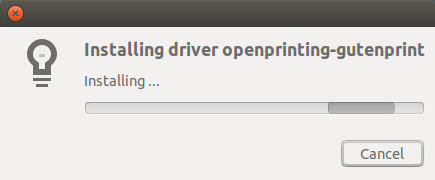

It's possible that the issue is only with one of the connection methods but not the others.Īnother thing that's easy to forget about, is that not all USB ports are created equally. Now What?įirst of all, try connecting to the printer via every different connection method that is supports: USB, Ethernet, Wireless etc.
Gutenprint linux install#
For example, my printer is an Epson P900, but when I install it through the Gutenprint drivers I can see that the PPD file it installs is just one for the P800.

Sometimes, the printer will just auto install and work immediately even if it's not 'officially' supported. Just plug your printer in and see if it automatically appears as a new printer in your list of devices.Try 'Obvious' Things Firstīefore we dive into the details, let's get some of the obvious things to try out of the way first: Finally, the article will end with a discussion on how I was able to force my specific Epson P900 printer to work with Linux.
Gutenprint linux how to#
Therefore, the rest of this article will focus on providing a general overview of how to debug and analyze printer problems on Linux for most printer models. This article will assume that the reader is interested in knowing how they can force their printer to work with Linux. Clearly, this is unacceptable, and the only reasonable course of action is to force this printer to be compatible with Linux regardless of how much time, money, or resources it will cost to do so. Unfortunately, this model of printer is not officially compatible with Linux. I recently spent $1,459.00 on a brand new Epson SureColor P900 printer. A Linux Printer Debugging Guide - By Robert Elder


 0 kommentar(er)
0 kommentar(er)
